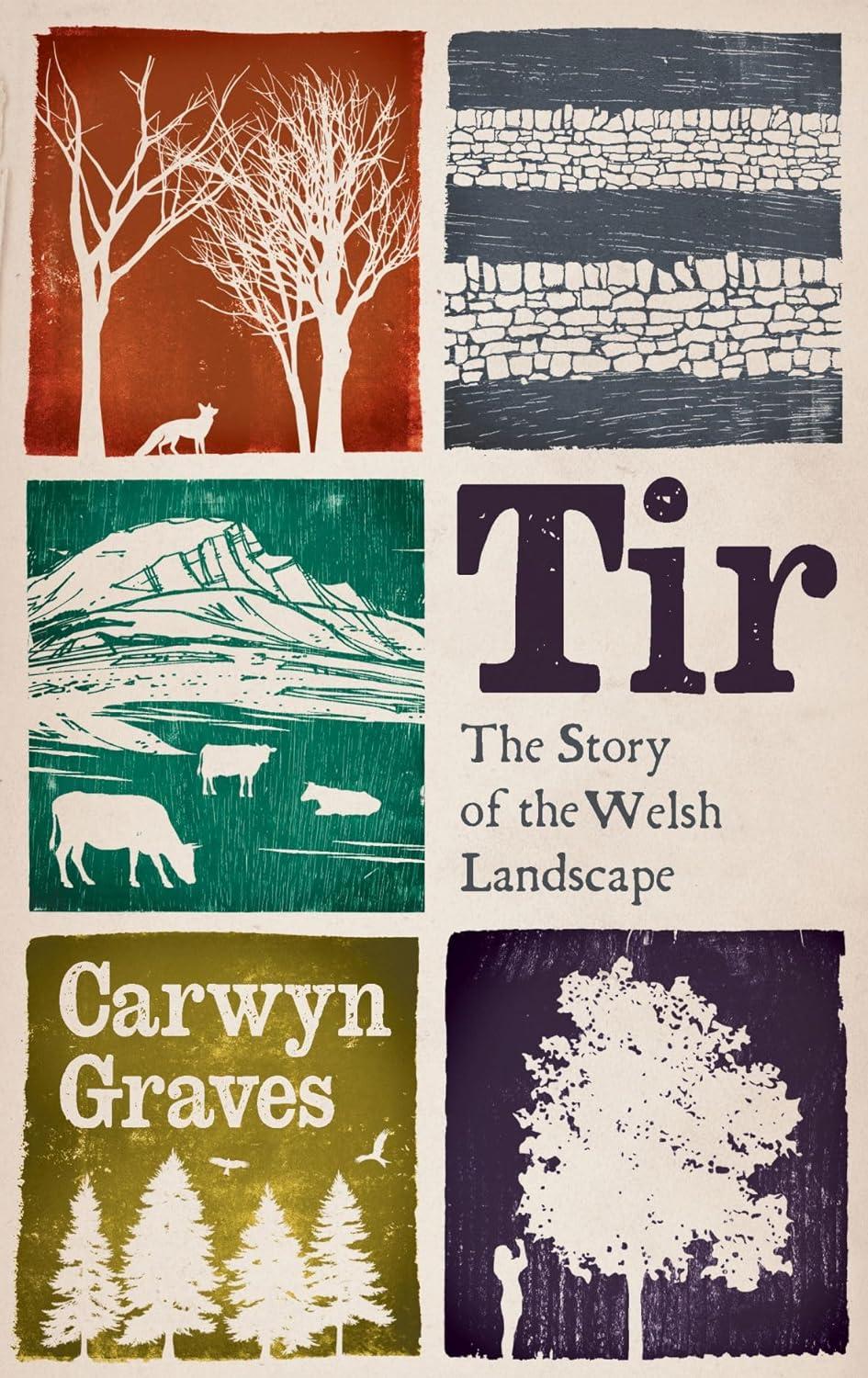Andy Bevan praises Carwyn Graves’s Tir: The Story of the Welsh Landscape (2024).
Published in the midst of high-stakes negotiations between farmers’ organisations and the Welsh Government on land use and livelihoods – and in the context of a Europe-wide rumbling rural rebellion – Carwyn Graves’ new book is more than a history of the Welsh landscape. It is an important contribution to contemporary politics and our understanding of what Welsh culture is.
It is multidisciplinary, even holistic, in its appeal, spanning land-use, heritage, stewardship, language, current debates around agriculture’s impact on sustainability and much more. Rooted in Welsh experience and testimonies, in emphasising themes of stored wisdom within indigenous knowledges, it intentionally connects with the problems and struggles of marginalised and indigenous peoples all over the world.
Graves seems to be equally comfortable speaking to farmers on the slopes of the Carneddau in north-west Wales or to long-established English-speaking farming families on the Gwent levels
The key word, culture, does some heavy lifting in these pages. Graves explains that the roots of the Welsh word for culture, diwylliant, implies ‘unwilding’. In doing so, he sets up an interesting debate, counterposing the agency and stewardship of generations of small hill farmers to some of the current discourse, controversy and rural hostility around ‘re-wilding’.
Large sections of the book are based on what the anthropologists would still, perhaps ironically in this case, call fieldwork. In his ethnographic research, Graves seems to be equally comfortable speaking to farmers on the slopes of the Carneddau in North-West Wales or to long-established English-speaking farming families on the Gwent levels. They all have a valued place in his understanding of Welsh culture.
Gofod i drafod, dadlau, ac ymchwilio.
Cefnogwch brif felin drafod annibynnol Cymru.
The main chapters examine differently designated types of traditional Welsh land use: cae (field), mynydd (mountain land), ffridd (upland pasture), rhos (moorland waste), perllan (orchard) and so on. But the real purpose is to explain these all together as a long-established system of agriculture which has evolved over millennia and in the execution of which farmers and their practices and animals have shaped the landscape which we think of as Welsh.
The 18-page Introduction sets the scene for the big-picture concepts which are to follow, drawing on modern archaeological research to remind us that humans and accompanying fauna have occupied the space now known as Wales since the retreat of the ice-sheets 10,000 years ago.
 The Epilogue contains a 10-point programme for adnewyddu/renewal, so this is no paean to the past, and necessary changes are advocated, but in the context of working with the grain of accumulated knowledge and relying on traditions of radicalism, resilience and resistance in the Welsh countryside.
The Epilogue contains a 10-point programme for adnewyddu/renewal, so this is no paean to the past, and necessary changes are advocated, but in the context of working with the grain of accumulated knowledge and relying on traditions of radicalism, resilience and resistance in the Welsh countryside.
The agenda which Graves identifies is timely. Tir: The story of the Welsh landscape adds depth to current debates around land-use – and the environmental subsidy regime – in Wales. It may also prompt some readers to reach for a copy of the IWA’s 2022 Report, Our Land: Communities and Land Use, written by Harry Thompson, the IWA’s former Economic Policy Lead – now based at Cynnal Cymru/Sustain Wales.
Carwyn Graves’s Tir: The Story of the Welsh Landscape (2024) is published by Calon/University of Wales Press.
All articles published on the welsh agenda are subject to IWA’s disclaimer. If you want to support our work tackling Wales’ key challenges, consider becoming a member.



